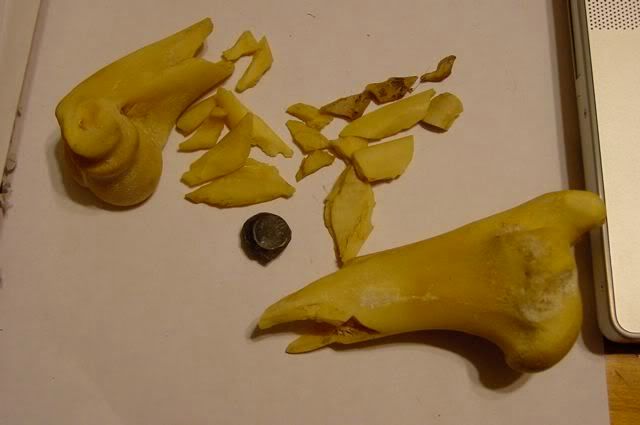The first deer I shot with the 16 bore rifle I stalked across a grassy plain with enough terrain features to BARELY maintain concealment. As I ran out of "cover" and was wondering how far I needed to crawl so I could get a shot, the deer, with a doe in the lead, came to me headed for water behind me several hundred yards. I did not get a shot at the buck I was stalking but I had a "B" tag. Below is the blood trail and a good representation of the terrain.

If you have Google Earth go to
45 59 57.56 N, 109 43 35.52W it is about where the shot was taken.
The overhead photo will give an idea of the area I hunt quite a lot. I can survey this spot from about 4 miles away where the county road tops a rise. But this does not make getting a shot that much easier. I have not seen a deer where I shot this doe since, they just happened to be there on that day.
This is why I won't use smoothbores or low velocity loads. It has little to do with killing power its TRAJECTORY and accuracy at ranges to 120 yards.
If you hunt in some plot of land with trails the deer follow and shoot 15-30 yards from a blind or tree stand it is a FAR different situation than most of my hunting which is almost entirely stalking animals on public land in the west.
Now if someone wants to read some historical information on the subject of trajectory and why its important for it to be flat James Forsythe's "The Sporting Rifle and its Projectiles" is available for download at google books.
Its a must read for the ML hunter.
Dan

If you have Google Earth go to
45 59 57.56 N, 109 43 35.52W it is about where the shot was taken.
The overhead photo will give an idea of the area I hunt quite a lot. I can survey this spot from about 4 miles away where the county road tops a rise. But this does not make getting a shot that much easier. I have not seen a deer where I shot this doe since, they just happened to be there on that day.
This is why I won't use smoothbores or low velocity loads. It has little to do with killing power its TRAJECTORY and accuracy at ranges to 120 yards.
If you hunt in some plot of land with trails the deer follow and shoot 15-30 yards from a blind or tree stand it is a FAR different situation than most of my hunting which is almost entirely stalking animals on public land in the west.
Now if someone wants to read some historical information on the subject of trajectory and why its important for it to be flat James Forsythe's "The Sporting Rifle and its Projectiles" is available for download at google books.
Its a must read for the ML hunter.
Dan





